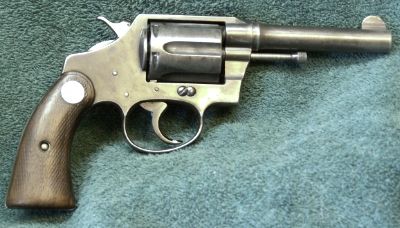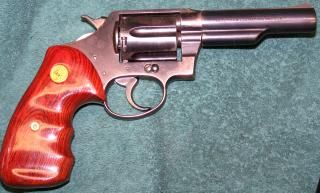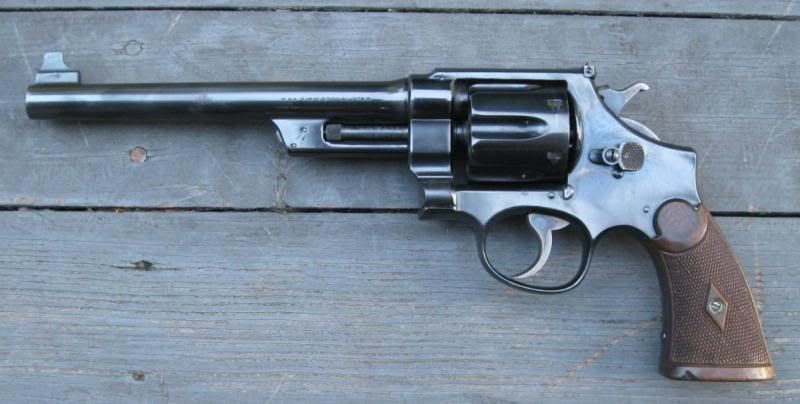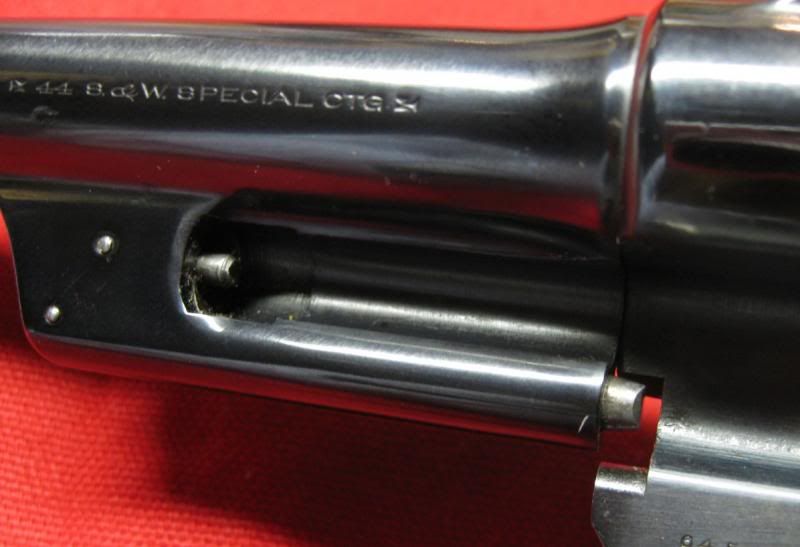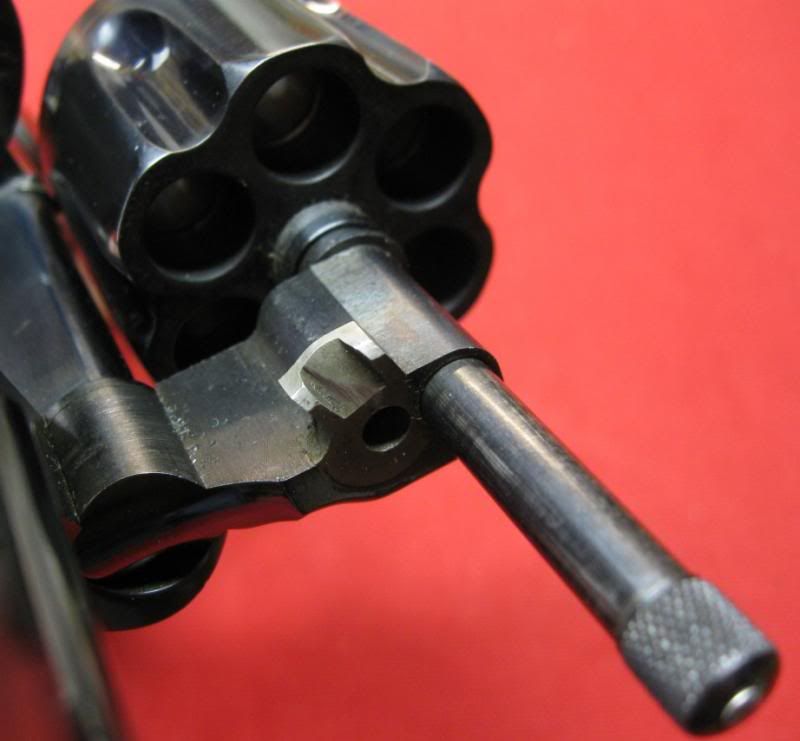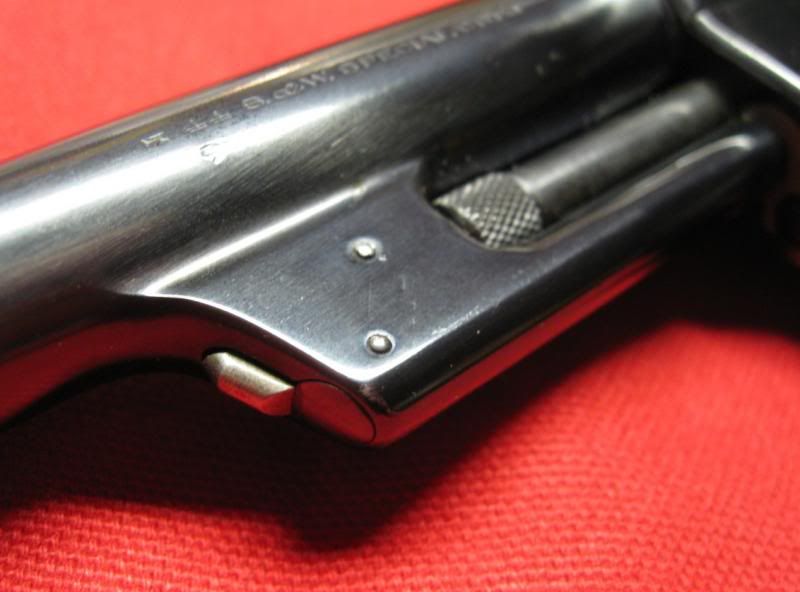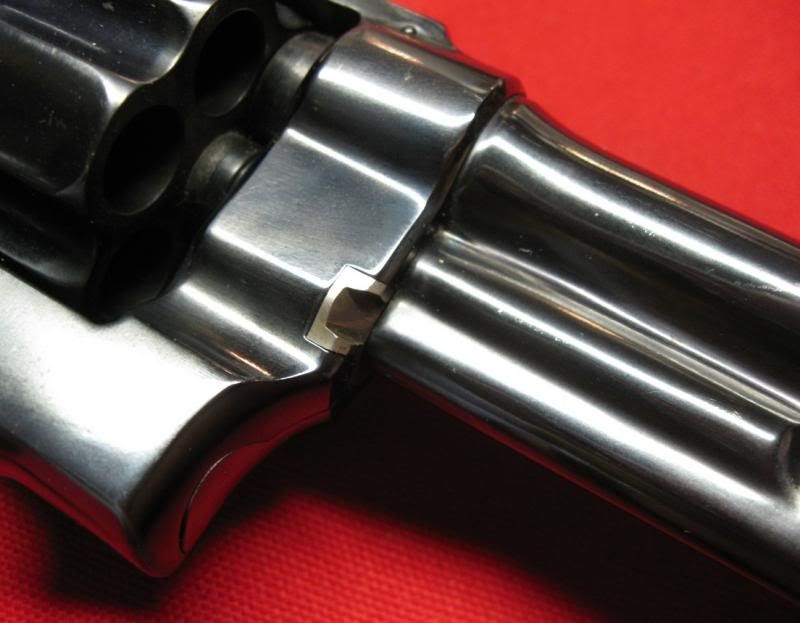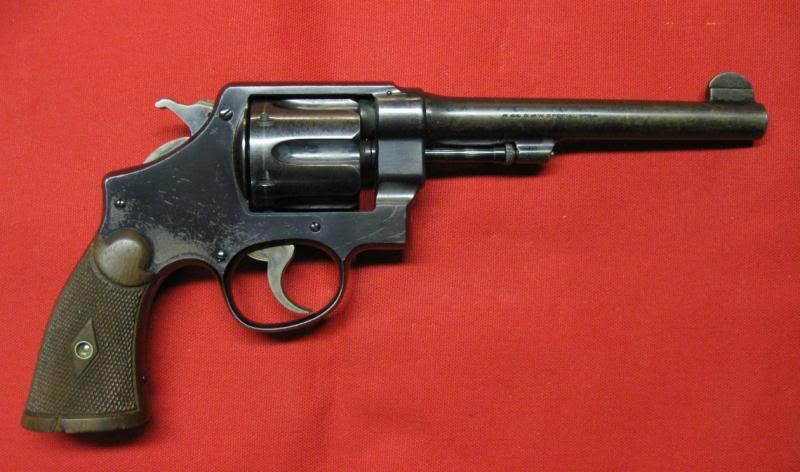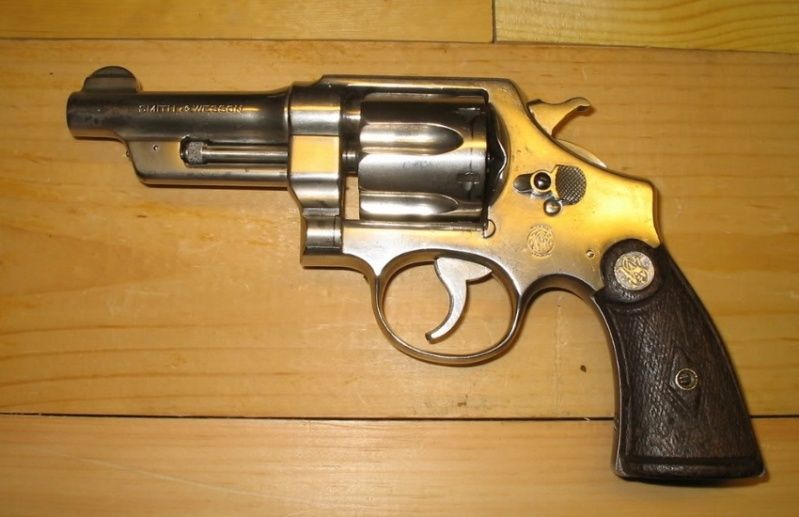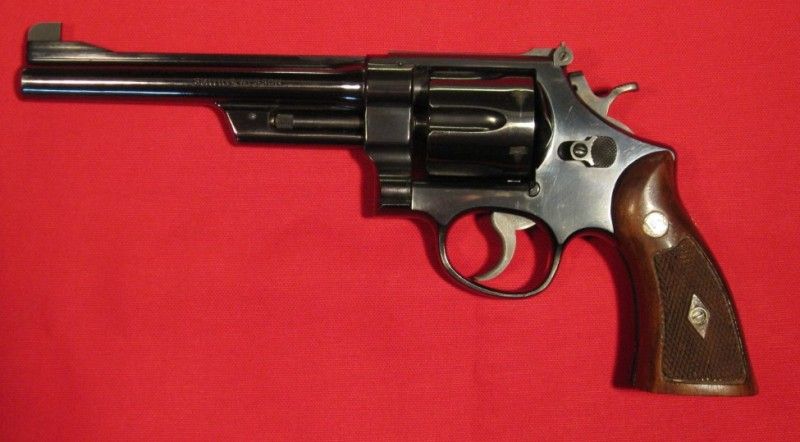S&W first put the under lug on the first triplelock N frame. Not sure of the reason why, perhaps it was just for looks.
S&W removed the under lug on the second model triplelock, and received enough complaints that the under lug was returned to the third, and last model, triplelock.
There was only one Triple Lock, the 44 Hand Ejector, First Model, made from 1908 until 1915, chambered for the brand new 44 Special cartridge. The same basic gun chambered for the British .455 Mark II caliber was known as the .455 Mark II Hand Ejector 1st Model, but it was just a caliber variation of the 44 caliber gun. There were some Triple Locks chambered for 44 Russian, 44-40, 38-40 and 23 were chambered for 45 Colt. But they were all variations of the 44 Hand Ejector 1st Model, the only revolver Smith and Wesson ever made with the third latch.
Here is a photo of a relatively unusual Target Model Triple Lock with a 7 1/2" barrel.
As Jim Watson has already stated, the purpose of the prominent extractor shroud on the Triple Lock was to house the 'third latch' that gave the Triple Lock its name.
A U shaped bar was housed inside the shroud. One end was short and engaged the recess at the front of the ejector rod, no different than any other Hand Ejector. The other leg of the U was much longer and protruded from the rear of the shroud. One spring pushed the double ended bar back, and two pins kept the mechanism in the shroud.
A hardened insert pressed into the crane had a ramp on it that pushed the U shaped locking rod forward as the cylinder was closed. When the cylinder closed all the way, the rod popped backwards into a hole, completing the lock up of the third latch. At the same time, the upper portion of the rod popped into the recess at the front of the ejector rod.
You can always identify a Triple Lock by the two pins in the shroud, and the bright finished portion of the U shaped bar that protrudes slightly from the shroud. When the cylinder closes, as the rod is pushed forward by the ramp on the insert in the crane, the front portion of the rod protrudes further from the shroud. Another way to identify a Triple Lock is the fact that the extractor shroud is a bit 'taller' than the shroud of any other S&W. It had to extend down further to house all the stuff inside it.
Here is a view of the hardened latch when the cylinder has been closed up.
As to why Smith and Wesson felt the necessity to include the third latch, no one will ever know. It was certainly over kill, two latches have always been sufficient to keep the cylinder of a S&W revolver in position in the frame. Some have even speculated that Smith added the third latch just because they could. This was the first large caliber side swing revolver S&W had made, following the introduction of the 32 Hand Ejector in 1896 and the 38 Hand Ejector in 1899. Perhaps S&W just wanted to make a big splash with their new large caliber side swing revolver. The Triple Lock also went by the name New Century, and perhaps S&W simply put the third latch in to impress the gun buying public with how intricate their new big 44 was.

